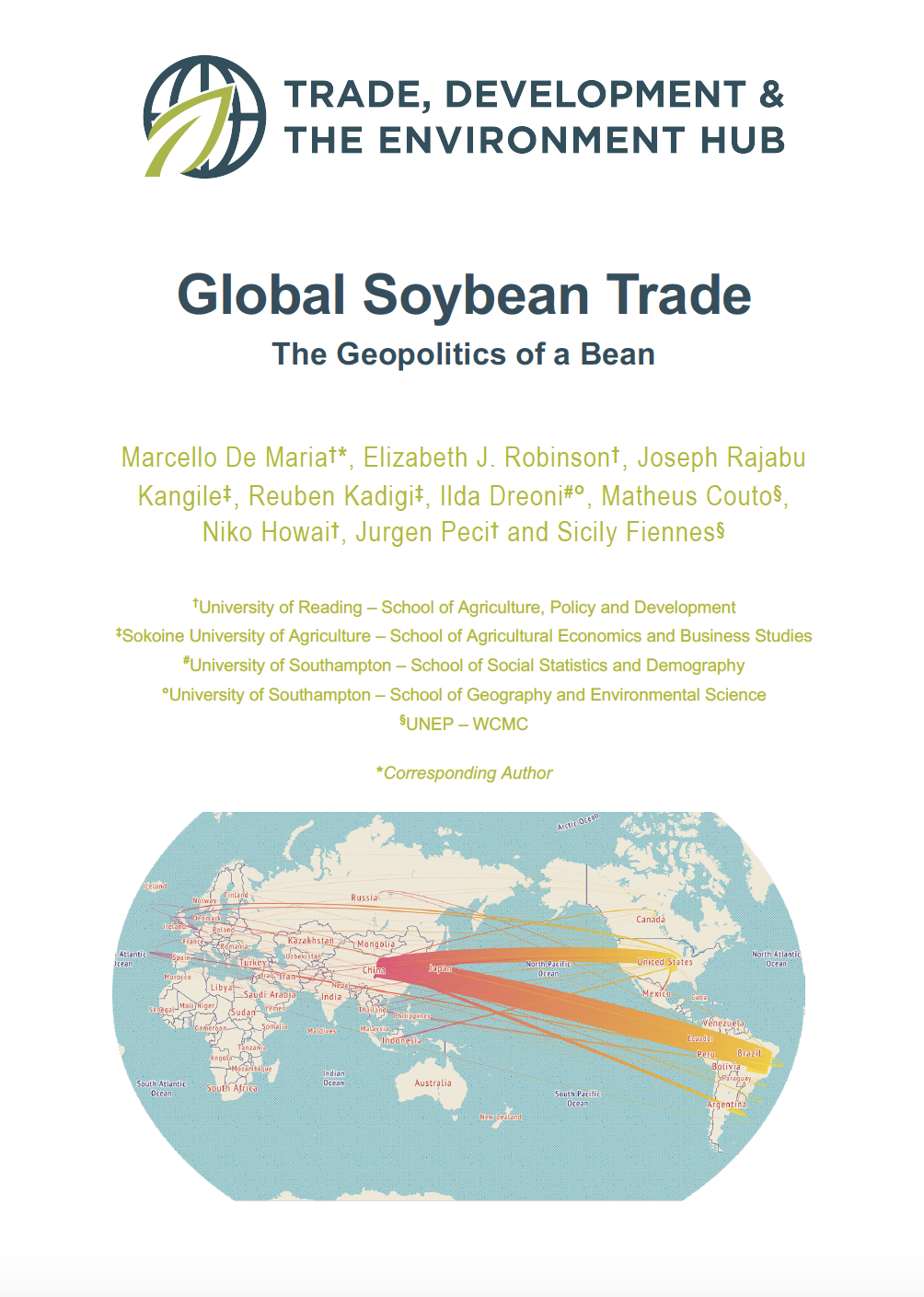Strong evidence indicates that the Brazilian government is taking advantage of the confusion caused by the Covid-19 pandemic to speed-up a wide-ranging environmental setback. We present a timeline of policies and acts taken by the current federal administration against the environment during the…
Digital technologies cut off access to land
Despite promises to fix unjust land governance, a new study shows that digital technologies can further land grabbing and inequality.
As corporate giants discuss “Tech for Good” at the annual meeting of the World Economic Forum,…
The trade agreement between the European Union and the Mercosur countries will increase deforestation in the Mercosur countries and Brazil, in particular, if ratified by member countries. We use a computable general equilibrium model to analyze how trade, land use, and agricultural production…
International civil aviation strives to significantly reduce its greenhouse gas (GHG) emissions, and the use of Sustainable Aviation Fuels (SAF) is an alternative for such purpose. However, for an alternative fuel to be considered SAF, some conditions must be met, and production must be…
Spatio-temporal characterization of urban expansion is the first step towards understanding how cities grow in space. We summarize two approaches used in urban expansion measurement, namely, concentric-ring analysis and grid-based analysis. Concentric-ring analysis divides urban areas into a…
This research examines the relations between forest decrease and legal property security in Mato Grosso State, Brazil. The study area encompasses 133,090.4 km2 of the Amazonian biome, belonging to the Brazilian Legal Amazon, located at the arc of deforestation where agriculture and cattle…
The urban planning ideas proposed by Jane Jacobs in the 1960s remain relevant to this day, promoting a perspective on the relationship between urban morphology and the community that takes into consideration the experiences of the people themselves in the planning of cities. With Jacobs’ ideas…
Many of the world’s agricultural frontiers are located in the tropics. Crop and cattle expansion in these regions has a strong environmental impact. This paper examines land use and land cover transformations in Brazil, where large swaths of natural vegetation are being removed to make way for…
With a diameter of only 5 to 11 millimetres on average, it is fascinating to think how soybean is currently affecting – and affected by – changes in economy, environment and society, both at the global and at the local level. Bearing in mind the main objective of the Trade Hub project and the…
The Brazilian Amazon has 49.8 million hectares (Mha) of public forestlands not allocated by the federal or state governments to a specific tenure status: the so called undesignated public forests (UPF). Historically, these public forests have been vulnerable to land grabbers and land speculation…
There are not fixed conditions that make potential agricultural frontiers attractive to capital: different spaces and strategies are chosen in relation to previous failed experiments, including those strongly contested by social movements. Socio-environmental contestations can also inadvertently…
Soil quality indexes (SQIs) are very useful in assessing the status and edaphic health of soils. This is particularly the case in the Mediterranean area, where successive torrential rainfall episodes give rise to erosion and soil degradation processes; these are being exacerbated by the current…










